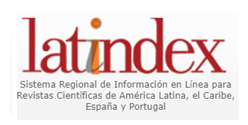CRITICAL THINKING AND CREATIVITY IN SIXTH GRADE STUDENTS, INTERVENTION STRATEGIES
DOI:
https://doi.org/10.56219/dialctica.v1i25.3826Keywords:
learning difficulties, inclusion, diversity, educational neuropsychologyAbstract
A number of studies have shown the importance of the critical thinking and the creativty of the students but few have studied the correlation between variables. This research project has as objective determine wether there is any correlation between critical thinking and the creativity skills of the students of sixth grader. It is a quantitative research, using a predictive correlational design between variables with a single group, the population corresponds to 37 children with aged between from 10 to 12 years old both genders of sixth grader of Liceo Cooperativo Campestre School of sogamoso city, only one group is used in the study to whom a subscale of the questionnaire is implemented that evaluates thinking skills MSQL. That evaluates critical thinking of turtle creativity questionnaire, In addition some questions that indicate the family scheme of the participants are annexed.The results show the existence of a significant among the variables, but it does not indicate any correlation between these and variable variables such as the family scheme and the genders of the participants. There is a significant percentage of students with a low level of critical thinking and creativity, so the answer is an intervention plan that stimulates the development of thinking skills and creativity skills.
Downloads
References
Argudin, L y Luna M. (2001). Desarrollo del Pensamiento Crítico: Libro del Profesor.
Beltrán, J.A. y Pérez, L.F. (2004). El proceso de elaboración. Madrid: Fundación encuentro.
Brookfield, S. D. (1987). Developing critical thinkers: Challenging adults to explore alternative ways of thinking and acting. San Francisco: Jossey-Bas.
Ennis, R.H. (1987). A taxonomy of critical thinking dispositions and abilities. In J. B.
Espitia, J. y Reyes, E. (2011). Desarrollo del pensamiento critico a través de la lectura de cuentos infantiles. Tesis Licenciatura. Universidad Libre: Colombia.
Finocchiaro, M. A. (2005). Argumentos about Argumentos. Sistematice, Critical and Historial Essays in Logical Teoría. EUA: Cambridge University Press. DOI: https://doi.org/10.1017/CBO9780511527517
Fuentes, C. R., y Torbay, A. (2004). Desarrollar la creatividad desde contextos
educativos: un marco de reflexión sobre la mejora socio-personal. Revista electrónica
Iberoamericana sobre calidad, eficacia y cambio en educación, 2(1), 1-14.
González, A. (2005). Motivación académica. Teoría, aplicación y evaluación. Madrid:
Pirámide.
Griffin, P., McGaw, B., & Care, E. (2012). Assessment and Teaching of 21st Century Skills. New York: Springer DOI: https://doi.org/10.1007/978-94-007-2324-5
Halpern, D. F. (1984). Thought and Knowledge: An Introduction to Critical Thinking.
Hillsdale. NJ: Erlbaum Associates.
Halpern, D. F. (2003). Thought and knowledge: An introduction to critical thinking (4th ed.). Mahwah, NJ: Lawrence Erlbaum Associates. DOI: https://doi.org/10.4324/9781410606433
Heyman, G. D. (2008). Children's critical thinking when learning from others. Current Directions in Psychological Science, 17(5), 344-347. DOI: https://doi.org/10.1111/j.1467-8721.2008.00603.x
Marques, J.F., (2012), Moving from trance to think: why we need to polish our critical thinking skills. International Journal of Leadership Studies. 7, 87-95.
Novak, J. D. & Musonda, D. (1991). A Twelve-Year Longitudinal Study of Science Concept Learning. American Educational Research Journal, 28(1), 117-153. DOI: https://doi.org/10.3102/00028312028001117
Osakwe, R. N. (2009). The effect of early childhood education experience on the academic performances of primary school children. Stud Home Comm Sci, 3(2), 143- 147. DOI: https://doi.org/10.1080/09737189.2009.11885290
Paul, R. (1992). Critical thinking: What, why, and how. New Directions for Community Colleges, 77, 3-24. DOI: https://doi.org/10.1002/cc.36819927703
Perez , M.J y Campos, A. (2007). Creatividad y Rendimiento Academico de Los Estudiantes de Bellas Artes. Revista Galego-Portuguesa de Psicoloxia E Educación, 15, 127-133.
New York: Free Press.
Pintrich, P. y García, T. (1993). Intraindividual diffrences in students’ motivation and selfregulated learning. German Journal of Educational Psichology, 7 (3), 99-107.
Puig, L. (1996). Elementos de resolución de problemas. Tesis doctoral. Universidad de Granada: Granada.
Romeo, J. (2010). Creatividad distribuida y otros apoyos para la educación creadora. Revista Pulso. 33. 87-108. DOI: https://doi.org/10.58265/pulso.5011
Ruiz, C. (2004). Creatividad y Estilos de Aprendizaje (Tesis Doctoral). Universidad de Málaga, Málaga, España.
Saiz, C. y Nieto, A. M. (2002). Pensamiento crítico: capacidades y desarrollo. Madrid: Pirámide.
Sánchez, M. (2004). Desarrollo de Habilidades del Pensamiento: Procesos Básicos del Pensamiento. Mexico: Trillas.
Santiuste, V. (2003). Pensamiento crítico: diferencias en estudiantes universitarios en el tipo de creencias, estrategias e inferencias en la lectura crítica de textos. Tesis Doctoral. Universidad Complutense de Madrid.
Spicer, K. L., & Hanks, W. E. (1995). Multiple measures of critical thinking and
predisposition in assessment of critical thinking. Paper presented at the Annual
Meeting of the Speech Communication, San Antonio TX.
Tamayo, O. E. (2004). Pensamiento critico dominio específico en la didáctica de las ciencias. TED. 36. 25-46.
Greenhill, V. (2009). P21 framework definitions document, Retrieved December 15, 2010. Recuperado de: http://www.21stcenturyskills.org/documents/p21_framework_definitions_052909.pdf.
Downloads
Published
How to Cite
Issue
Section
License
Copyright (c) 2025 DIALÉCTICA

This work is licensed under a Creative Commons Attribution-NonCommercial-ShareAlike 4.0 International License.
La revista Dialéctica conserva los derechos patrimoniales (copyright) de las obras publicadas, que favorece y permite la reutilización de los mismos bajo la licencia Creative Commons Atribución-NoComercial-CompartirIgual 4.0 , por lo cual se pueden copiar, usar, difundir, transmitir y exponer públicamente, siempre que se cite la autoría y fuente original de su publicación (revista, editorial, URL y DOI de la obra), no se usen para fines comerciales u onerosos y se mencione la existencia y especificaciones de esta licencia de uso. Si remezcla, transforma o crea a partir del material, debe distribuir su contribución bajo la misma licencia del original.












